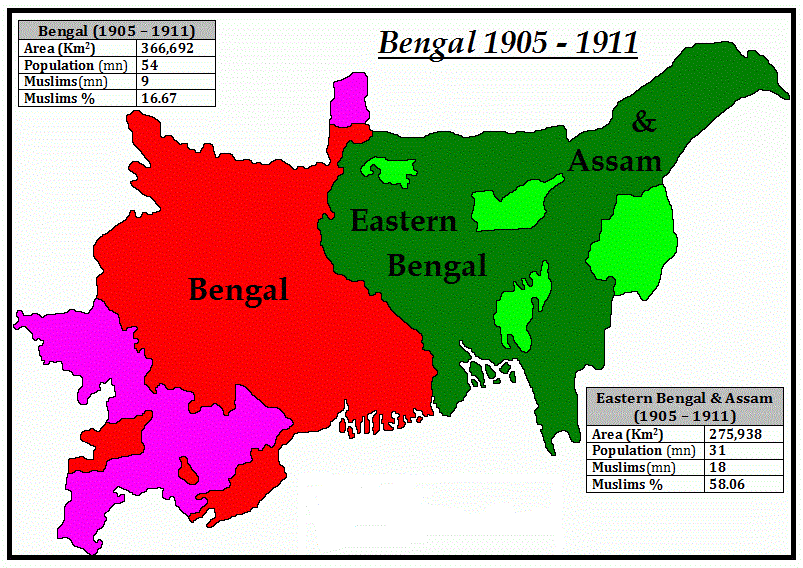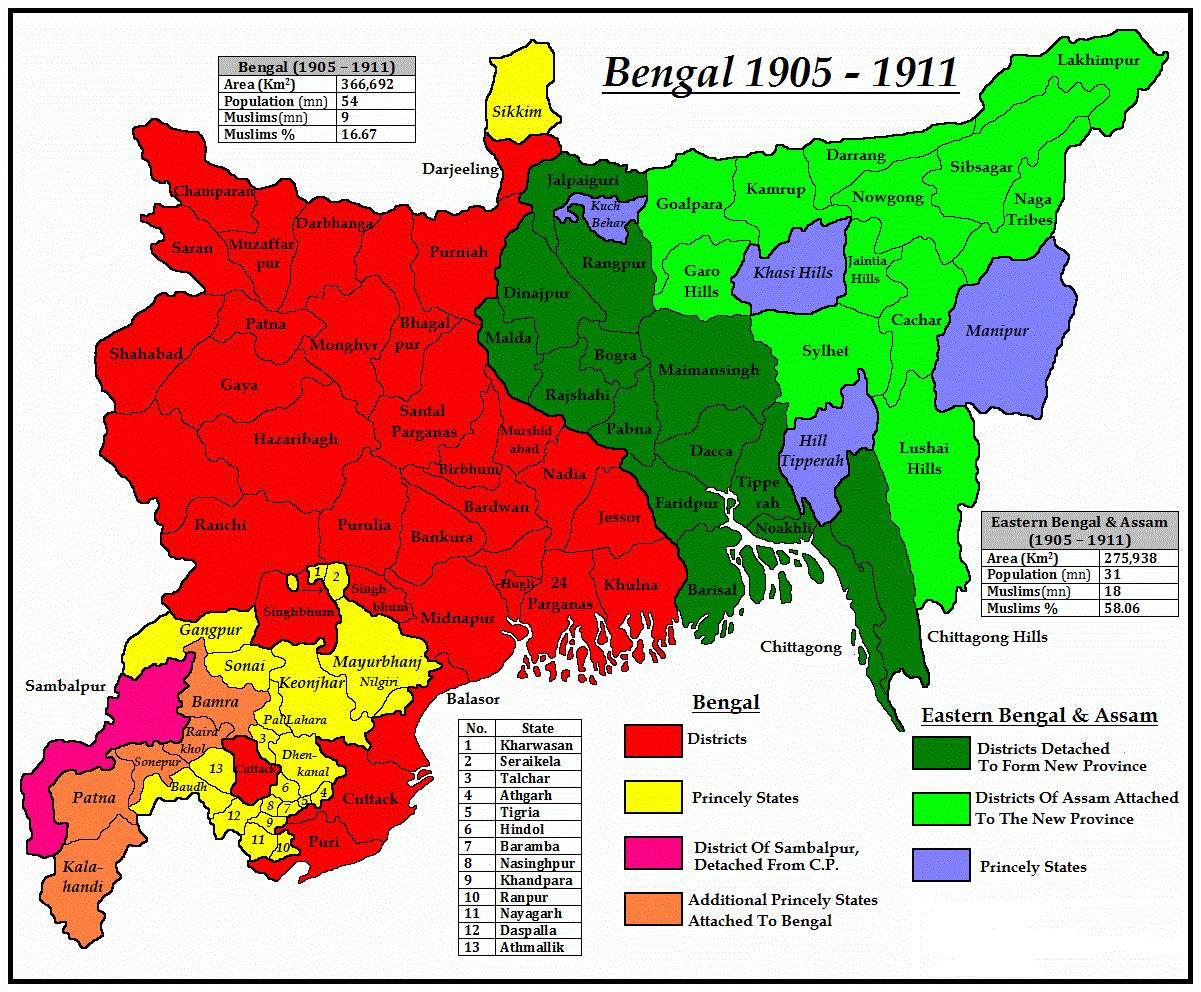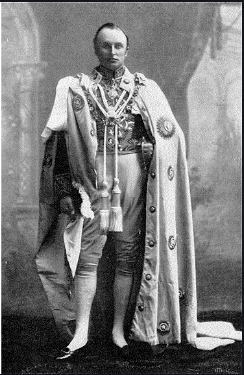ICSE Solutions for Class 10 History and Civics – The Partition of Bengal
ICSE SolutionsSelina ICSE Solutions
APlusTopper.com provides ICSE Solutions for Class 10 History and Civics Chapter 11 The Partition of Bengal for ICSE Board Examinations. We provide step by step Solutions for ICSE History and Civics Class 10 Solutions Pdf. You can download the Class 10 History and Civics ICSE Textbook Solutions with Free PDF download option.
Download Formulae Handbook For ICSE Class 9 and 10


Very Short Questions
Question 1: Mention one important anti-India policy adopted by Lord Curzon, which brought about aggressive nationalism in India.
Answer: Partition of Bengal was one important anti-India policy adopted by Lard Curzon, which brought about aggressive nationalism in India.
Question 2: When and by whom was Bengal partitioned?
Answer: Bengal was partitioned on 16 October 1905 by Lord Curzon.
Question 3: What reason was given for the partition of Bengal by the British?
Or
How did Lord Curzon justify the Partition of Bengal?
Answer: The reason for the partition as given by the British was that the partition was to introduce efficiency in the administration of the province of Bengal.
Question 4: Briefly state how people reacted to the partition of Bengal?
Answer: People observed 16th October 1905 the effective day for partition as a day of mourning. There were protests everywhere. People fasted, walked barefoot to the Ganges singing patriotic songs.
Question 5: Who wrote the Vande Mataram?
Answer: Bankim Chandra Chatterjee composed the Vande Mataram.
Question 6: Why was 16th October 1905 observed as Raksha Bandhan Day?
Answer: 16th October 1905 was observed as Raksha Bandhan Day because it signified brotherhood between people of East and West Bengal.
Question 7: What was the main impact of the partition of Bengal on the national movement?
Answer: The agitation against the partition of Bengal went on growing and became a great national movement known as Swadeshi and Boycott Movement.
Question 8: Of which areas did the new Bengal province comprise?
Answer: East Bengal comprised of Assam, Chittagong with fifteen districts of old Bengal.
Question 9: Why were the people from Bengal opposed to its partition?
Answer: The people of Bengal were opposed to its partition because Bengalis felt that Curzon was trying to split their unity by stirring up religious differences.
Question 10: What is meant by Swadeshi?
Answer: Swadeshi means ‘of one’s own country’ and it implies that people should use goods produced within the country.
Question 11: Which countries used the idea of Swadeshi and Boycott before it was used in the Indian National Movement?
Answer: America and China used the idea of Swadeshi and Boycott before it was used in Indian National Movement.
Question 12: What virtues did the Swadeshi Movement instill among the Indians?
Answer: The Swadeshi Movement united the people of India. It instilled in the people a wave of nationalist feeling that united the whole country in its fight for the freedom from foreign rule.
Question 13: Who was Anandamohan Bose? For what is he remembered?
Answer: Anandamohan Bose was a veteran leader of Bengal. He is remembered for laying the foundation of The Federation Hall in Calcutta.
Short Questions – I
Question 1: What were Curzon’s two real motives behind the partition of Bengal.
Answer: Curzon’s motive behind partitioning Bengal were:
(i) Curb the radical Bengali nationalists and thus to weaken the nationalist movement.
(ii) To set the Hindus and Muslims against each other.
Question 2: What was Lord Curzon’s argument in favour of the partition of Bengal.
Or
What was the motives of Lord Curzon behind the Partition?
Answer: Lord Curzon’s argument in favour of the partition of Bengal was that it was too large a province to be efficiently administered by a single provincial Government. It was quite difficult for Lt. Governor to administer it effectively. Therefore it should be divided into two provinces which would help to improve the administration of the two provinces.
Question 3: How did the ideas of Swadeshi help Indians to be united against the British?
Answer: Large crowds at meetings took the oath of Swadeshi. Swadeshi brought into politics a new class of people without any distinction of class or creed. It taught the press to be fearless, Hindus and Muslims to co-operate, students to defy unjust authority and to make sacrifices of their lives for the sake of their country. In this manner the idea of Swadeshi helped Indians to be united against the British.
Question 4: How did Indians react to the call of Boycott and Swadeshi under Tilak’s leadership?
Answer: Under Tilak’s leadership the movement of Swadeshi and Boycott gained momentum. The youth of Bengal marched in organised procession protesting against the partition of Bengal. British goods were burnt at public places. Women stopped wearing foreign bangles and gave up the use of glass and students refused to use foreign paper.
Question 5: Give two reasons for the partial failure of the Swadeshi Movement.
Answer: The two reasons for the partial failure of the Swadeshi Movement were:
(i) It had no broad base as the common man had not been touched by it.
(ii) The British succeeded in creating a split between the Moderates and the Assertives in the Congress at the session held in Surat in 1907.
Question 6: Give two examples to show how the Swadeshi Movement gave stimulus to native industries.
Answer: (i) Swadeshi textile mills, match and soap factories, tanneries and potteries spread up everywhere.
(ii) The Tata Iron and Steel Company refused all foreign Government help which was subscribed to Indians within three months.
Question 7: How did the Swadeshi Movement affect culture and education?
Answer: The Swadeshi Movement affected culture and education. A new type of nationalist poetry, prose and journalism charged with passion and idealism was born. The spirit of Swadeshi enabled people to educate themselves on national lines. National educational institutions were opened for imparting literary, technical and physical education.
Question 8: Briefly describe how the partition of Bengal led to die separatist tendency between the Hindus and Muslims.
Answer: The newly created Muslim majority province gave them the feeling that it was a source of strength to them and a center of their political activity, separate from die Hindus.
Short Questions – II
Question 1: How did the people express their unhappiness against this decision of the British.
Or
What was the reaction of the people to the partition?
Answer: When the proposal was published then there was a great hue and cry from all quarters. When the partition came into effect the people started a strong movement against it known as the Anti Partition Movement. The people, under the leadership of great Nationalist leaders, understood the real motive of the partition which was to flare up the confrontation between the Hindus and Muslims. The people felt humiliated, insulted and tricked. They were ready to sacrifice their lives and face death fearlessly.
Question 2: What did the people do to make Swadeshi and Boycott Movement more successful.
Answer: In all public and Anti-Partition meetings all over the region (Bengal), even other States and big town the call for total boycott and for use of Swadeshi was given. Bal Gangadhar Tilak played a significant role as a leader and soon the Movement gained great force. Young and old men and women of Bengal marched in well-organised processions in protest against the division of Bengal. Thousands of meetings were organised in which British goods were burnt at public places. The crowds disallowed shopkeepers to sell British goods. People of all shades co-operated in this agitation.
Question 3: What was the reaction of the British Government to the Swadeshi and Boycott Movement?
Answer: The British Government reacted sharply:
(i) During 1905 to 1909, thousands of people were arrested and sent to jail.
(ii) The Government grants to Schools and Colleges, participating in the Swadeshi Movement, were discontinued.
(iii) The British invoked the Regulation of 1818, to suppress the movement and arrested and deported several leaders.
Question 4: Discuss how Anti-Partition Movement gave a stimulus to indigeneous industries.
Answer: The National leaders of Anti-Partition Movement adopted Boycott as the strongest weapons agairtst the partition of Bengal. It gave a stimulus to the growth of indigenous industries. Many factories, mills and business establishment were set-up. Articles of daily use were manufactured in India. Swadeshi textile mills, match and soap factories, tanneries and potteries sprung up everywhere P.C. Ray set-up his Bengal Chemicals Factory. The Tata Iron and Steel Factory was set up only by IndiAnswer: All foreign help of men and money was turned down. Swadeshi movement also helped to unite the Moderates and the Assertives.
Question 5: How did the agitation bring about the ‘real awakening of India’ as Gandhiji said later?
Answer: The agitation brought about ‘real awakening’ through its programmes like the Swadeshi and Boycott Movements, involvement of masses in this movement, involving women and youth, popularising the concept of National Education, strengthening the bonds between Hindus and Muslims despite attempts by the British to draw a wedge between the two communities. The cry Vande-Mataram filled the air everywhere.
Long Questions
Question 1: On the grounds of improving administrative efficiency, how Curzon justified the partition of Bengal.
Answer: Lord Curzon, who was the Viceroy of India from 1898 to 1905, became unpopular in India. The reason was that he had followed a policy against the Indians. He tried to justify the partition of Bengal by explaining that Bengal was too large as a province to be administrated by a single Governor. He, even in this dispatch, mentioned the view-points of Sir A. Fraser, Lt. Governor of Bengal. He said that the Presidency of Bengal had become large and unwieldy. It consisted of Bengal, Bihar, Orissa, Chhota Nagpur and some other far off areas. It extended over an area of about 4,89,500 sq. km. It had a huge population of about 7.8 million. The Royal assent was given on 18th September, 1905 to the proposals of Lord Curzon for the division of Bengal. According to this, the new province was created by amalgamating Assam and Chittagong with fifteen districts of old Bengal. The area of this new province was about 2,74,540 sq. km. and its population was about 31 million.
Question 2: Discuss how Curzon striked at the roots of Bengal nationalism to weaken the National Movement.
Answer: Lord Curzon, on assuming the office, felt that patriotic nationalism was gaining ground too rapidly. To counter this spirit of nationalism Lord Curzon thought, it would come to no good unless the Hindu and Muslims of India were not turned against each other. Therefore Lord: Curzon sent his proposal for the division of Bengal, to obtain the Royal assent. Bengal was divided and the nationalist sentiments of Bengal leaders were badly hurt. The two Bengals were created in such a way that there were two districts Hindu and Muslim blocs. The people of Bengal understood that Lord Curzon was trying to split their unity by stirring up religious differences. East Bengal had Muslim majority and the West had Hindu majority. Both had common language, culture and traditions. This created a wave of indignation all over the country against the British Government. Curzon wrote, ‘The Congress is tottering to its fall and one of my ambitions, while in India, is to assist it to a peaceful demise.’ This was the clear motive of Curzon for the partition of Bengal.
Question 3: How did the Nationalists interpret Lord Curzon’s motives?
Answer: The Indian Nationalists interpreted this as follows:
(i) Bengal was the nerve center of Indian nationalism at the time. So the British hoped to stop the rising tide of nationalism by partitioning Bengal.
(ii) The partition of Bengal intended to curb Bengali influence by not only placing Bengalis under two administrations but by reducing them to a minority in Bengal itself.
(iii) The partition was meant to foster division on the basis of religion. East Bengal would be predominately a Muslim majority state and west Bengal a Hindu majority state.
(iv) It was considered as a price for Muslim League’s loyalty towards British.
Question 4: Discuss about the measures taken by the British to crush the Anti-Partition Movement.
Answer: Government Measures to Crush the Bengal Movement: The government followed a policy of repression to stop the Swadeshi movement and Boycott movement, which was launched as a reaction against the partition of Bengal in 1905.
(i) The people and local leaders were beaten mercilessly by the solders and hundreds were put behind the bars.
(ii) Meetings were disrupted and the political leaders were jailed. Lala Lajpat Rai and Ajit Singh were arrested and deported to Burma. In 1906, Tilak was sentenced to six year imprisonment.
(iii) The students were beaten, flogged and expelled. Teachers and professors were threatened with the disciplinary action.
(iv) The British Government followed a policy of divide and rule. They tried to prevent Muslims from joining the Congress by following a policy of conciliation towards Muslims.
(v) School and colleges were warned. The Government grants to educational institutions which were suspected of participating in the Swadeshi Movement, were discontinued.
Question 5: “Anti-Partition movement roused the national sentiments which led to the outbusst of revolutionary activity”. Discuss in brief.
Answer: The spirit of unrest and discontent spread rapidly to different parts of the country when Bengal was divided in two parts in 1905. Lord Curzon gave the reason that the province was too large to be administered properly and effectively as a single unit. But the people of Bengal were not satisfied with this reason and they saw a different reason in this action. This was looked upon as a treacherous attempt to destroy national spirit of the patriots of Bengal, by splitting them into two sections.
Another reason, according to the people of Bengal, was to create a feeling of division between the Hindus and Muslims. Therefore, it roused the national sentiments of all the Bengalis. A wave of indignation against the British Govemment spread all over the country. Meetings were organised and the partition of Bengal was vehemently condemned. Soon it took the form of a widespread Movement, called ‘Anti-Partition Movement’.
Surendra Nath Banerjee went from place to place and roused the people against this injustice. The Indian Nationalists decided to Boycott British goods and take to swadeshi or indigenous goods. The volunteers, especially students, stood in front of the shops where British goods were sold and stopped all Indians from buying them. They even collected foreign goods,and made bonfires of them. This agitation continued for six years, during that time it had turned into a great national movement. At last the Government was compelled to revoke the partition of Bengal in 1911.
Question 6: Anti-Partition Agitation of 1905 was essentially aimed at undoing the Partition of Bengal. In this context what limitations did the agitation suffer?
Answer: The Anti-Partition Agitation suffered from many limitations which are often described as causes of the failure of the Movement. First of all the agitationists though spoke about overthrowing the British, they had no plan to provide any alternative Government in India. The Swadeshi and Boycott Movement focused only on economic aspects of the programme. It was not used as a political weapon to destabilise the Government. It had the potential of causing such a Revolution but nothing of that sort was done. Even the Congress remained a divided house between the Moderates and Assertives and the doors had finally to be closed to the Assertives at the Surat session of the Congress in 1907. These limitations however don’t undermine the significance of the Anti-Partition Movement. Online casinos have revolutionized the way we gamble, offering a wide range of games that cater to diverse tastes and preferences. Among the most popular and exciting games are fish gambling games, which have gained immense popularity in recent years. These games are essentially arcade-style shooters where players shoot virtual fish and other sea creatures to win prizes. The thrill and excitement of playing these games are unmatched, and they offer a unique change of pace from traditional casino games like slots, poker, and roulette. If you’re looking to try your hand at fish gambling games, you can head over to https://cointofish.io/, a popular online casino that offers an extensive collection of fish games with exciting features and rewards. With stunning visuals, engaging gameplay, and lucrative prizes, fish gambling games are definitely worth a try. Whether you’re a seasoned gambler or a casual player, these games promise to deliver an unforgettable experience. So, why wait? Dive into the world of fish gambling games today and discover the thrill of winning big!
Picture Based Questions
Question 1: Answer the following:

(i) Name the person in the picture given alongside.
(ii) Which event the person showing in the picture was associated with? What justification he give for that incident.
Answer: (i) Lord Curzon.
(ii) He was associated with Partition of Bengal. He gave justification that the Bengal province was too large to be administered by a single governor and thus was partitioned for administrative reasons.
For More Resources
